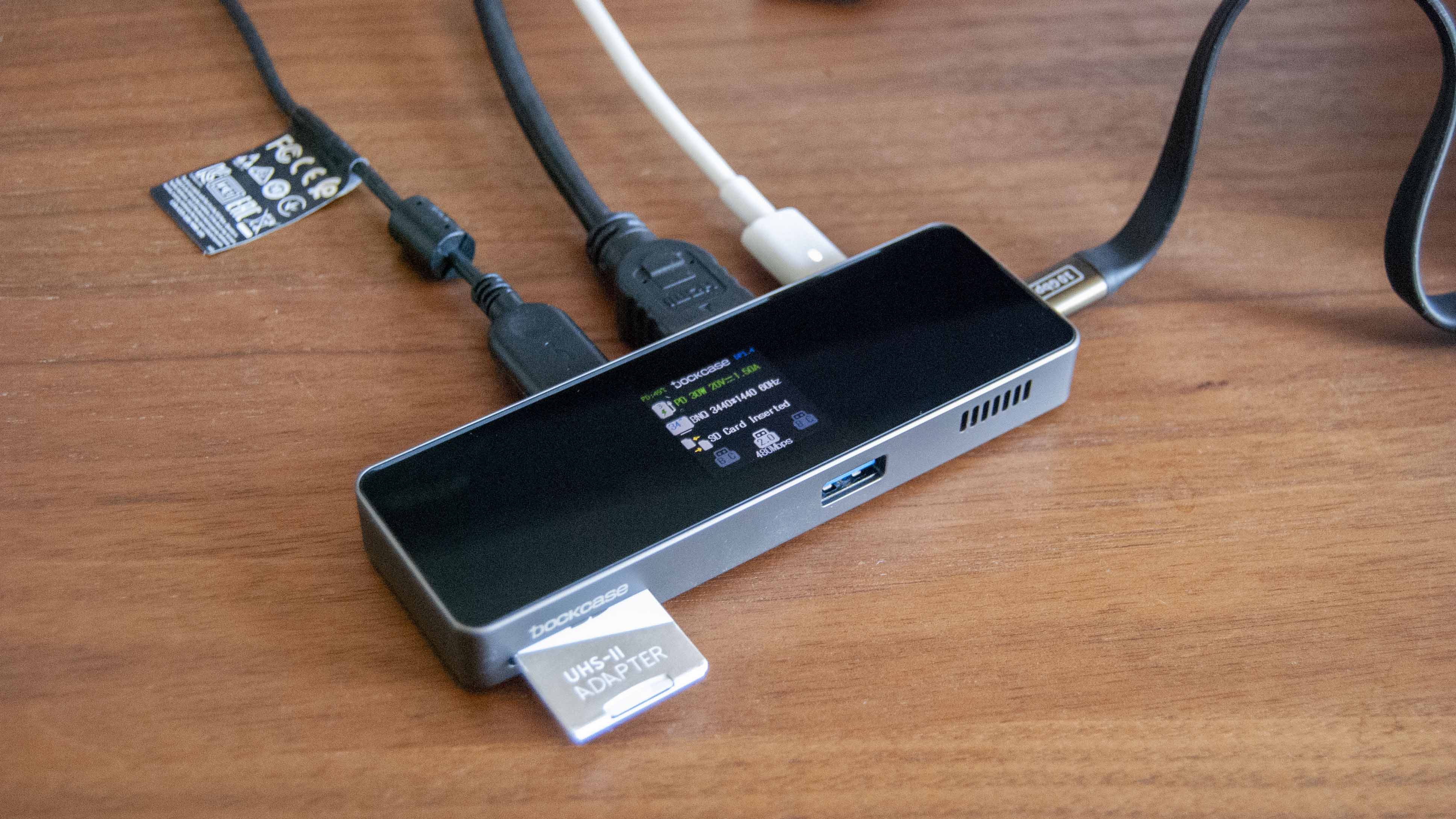Windows Central Verdict
The DockCase 7-in-1 USB-C Visual Smart Hub adds a status display to help you keep tabs on your connected accessories. Its 4K @ 60Hz display support is an upgrade over the 30Hz you find in many competing hubs, and the hub is overall built to a high standard. It's a great little accessory, as long as you don't mind paying more for it compared to other top options.
Pros
- +
Six ports, passthrough USB-C charging
- +
LCD screen with status updates for connected accessories
- +
Detachable host cable
- +
Well-built and compact
- +
4K@60Hz display support
Cons
- -
No downstream USB-C
- -
Built-in display adds cost
Why you can trust Windows Central
A few months ago I was introduced to DockCase via its Smart SSD enclosure, an accessory that allows users to monitor their connected storage with a built-in LCD display. I was impressed by the craftsmanship, extra features, and the ease of use. DockCase has now introduced the 7-in-1 USB-C Visual Smart Hub, another accessory that looks a lot like the Smart SSD enclosure but performs a completely different task. This little hub has the same LCD screen and general build, but it includes seven ports for removable storage, display, and more. I've been using it for the last couple of weeks to see what it's all about and, ultimately, whether or not it's worth your money.
DockCase 7-in-1 USB-C Visual Smart Hub: Price and availability
DockCase supplied Windows Central with a review unit of its 7-in-1 USB-C Visual Smart Hub with detachable host cable. It was originally available through a Kickstarter campaign, but it has now moved beyond and is available more broadly.
The official DockCase site has the model with detachable cable for sale for about $100, plus there's currently a 20% off coupon if you use code SAVE2021 at checkout. A model with fixed host cable is currently listed at about $80, with the same 20% off coupon available.
The model with detachable cable is also listed at Amazon for about $65; there's currently a $5 discount coupon available. I recommend sticking with the detachable model, as this allows you to swap host cables should it become damaged during use.
DockCase 7-in-1 USB-C Visual Smart Hub: What I like
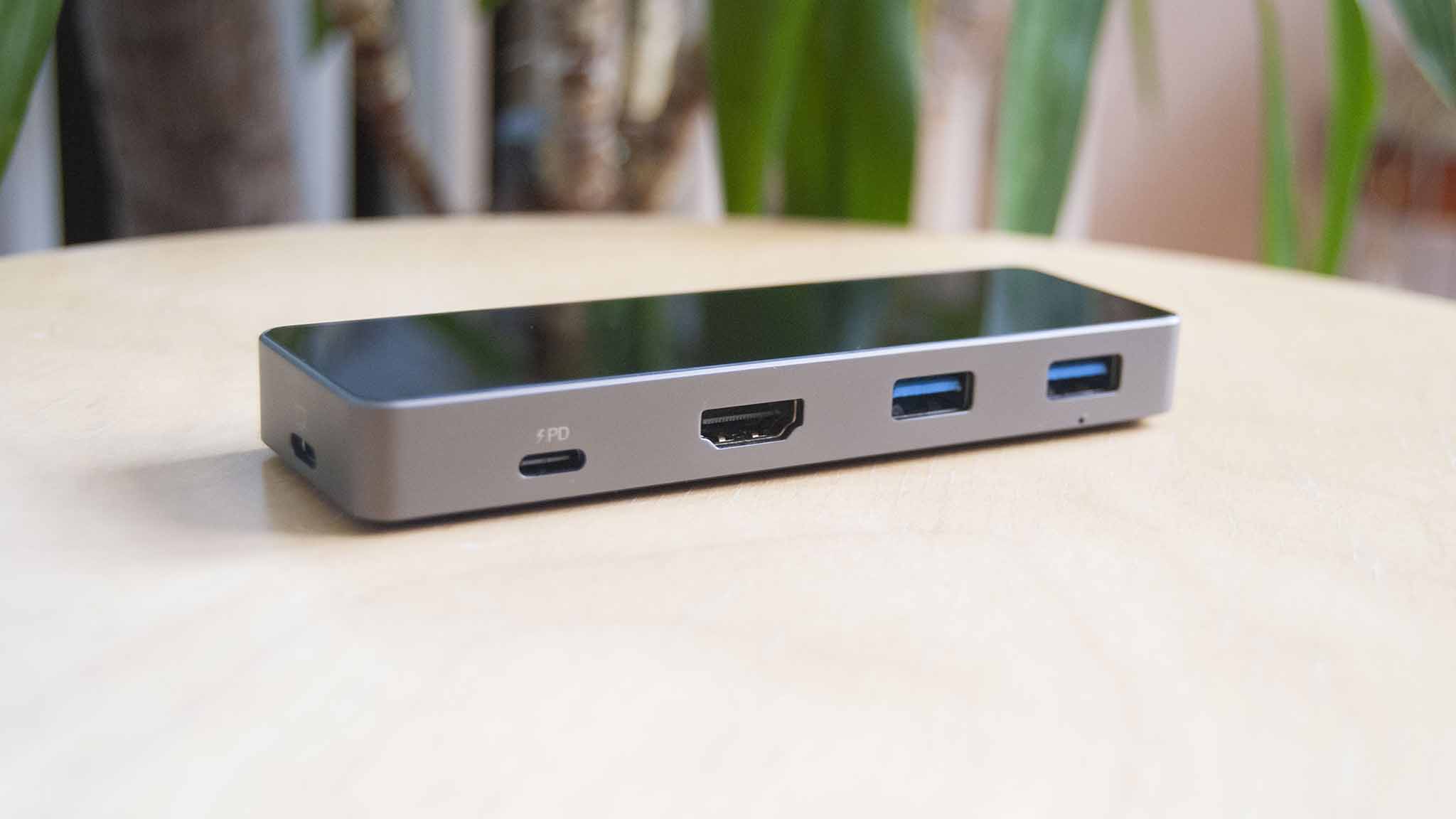
The DockCase 7-in-1 USB-C Visual Smart Hub borrows the same chassis as its Smart SSD enclosure. It's made primarily of a zinc alloy, which is smooth and solid in all areas. In my DockCase Smart SSD enclosure review, I noted that "the enclosure is compact and lightweight, and thanks to the removable host cable you can easily slip it into a pocket."
Connection: USB-C 3.1 (Gen 2)
Detachable cable
Ports: Three USB-A 3.0 (5Gbps)
HDMI 2.0
SD card reader (UHS-I)
microSD card reader (UHS-I)
USB-C PD 3.0 (100W)
Power: Up to 100W
Max display res: 4K @ 60Hz
Material: Zinc alloy, tempered glass
Dimensions: 4.8 x 1.5 x 0.5 inches
(122mm x 40mm x 14mm)
Weight: 0.28 pounds (128g)
Warranty: 1 year
The same applies here. But instead of a removable ribbed bottom and solid sides, there's a flat bottom to better rest on a desk and cutouts for venting and ports. I love that the host cable is detachable, as it prevents you having to buy an entirely new dock if the fixed cable is damaged.
While you can go connectivity-wild with something like the CalDigit TS4 (sporting 18 total ports), the seven ports that DockCase has included here are more fitting for the average workflow. The front edge has a single USB-A 3.0 port with 5Gbps transfer speeds, as well as UHS-I SD and microSD card readers. The back edge, which generally faces away from the user, offers two more USB-A 3.0 ports, HDMI 2.0, and a USB-C port for passthrough charging (no data) from your laptop's AC adapter. The rear alignment makes it easier to manage cables on your desk. Less spaghetti is always a good thing.
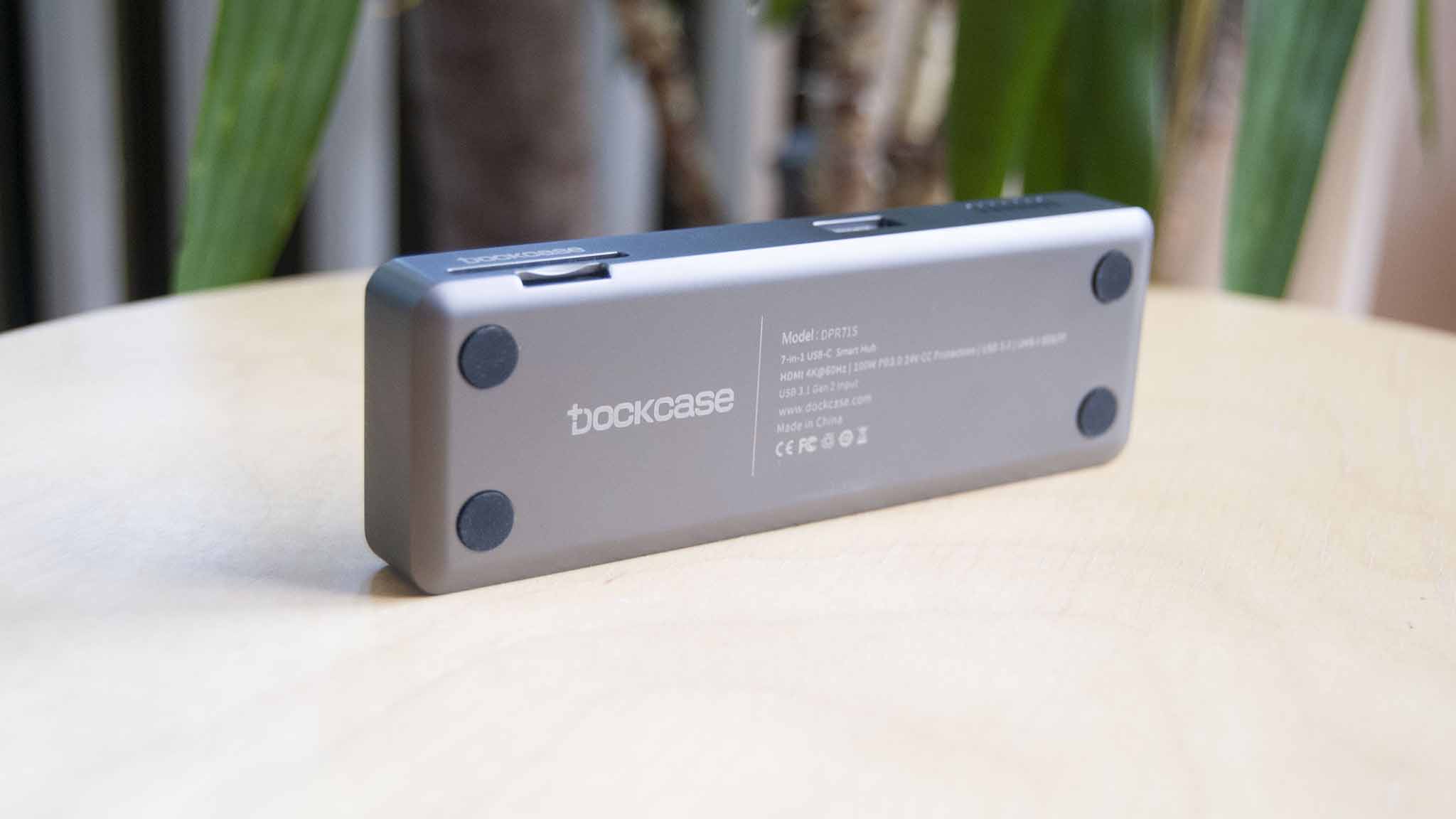
The top of the hub is covered by a single piece of tempered glass with black finish below. The uniform look is interrupted in the middle by a 1.3-inch LCD display with 261 pixels-per-inch density. This little display, despite its size and the amount of information shown, is fairly easy to read even at a glance.
The DockCase 7-in-1 USB-C Visual Smart Hub makes it easy to keep close watch on all of your connected accessories.
Information displayed includes the internal operating temperature of the hub, the display standard being used, the amount of power passing through the hub to the host laptop, the size, resolution, and refresh rate of your connected display, and SD and microSD storage status (basically whether or not a card is inserted). There are also three USB-A status symbols that show speed and USB version used by your accessories.
Furthermore, when you first plug in an external display the screen briefly swaps over to a deeper rundown of its stats; the same applies for AC input, with a readout of voltage and amperage. As an added bonus, the passthrough charging has 24V CC protection to protect the hub from getting fried due to a faulty adapter. I didn't test this, so results may vary.
Port performance is all where it should be in terms of transfer speeds, with the USB-A ports hitting a ceiling around 600MB/s and the SD card readers hitting around 90 to 100MB/s. While there's just the one HDMI port, its support for up to a 4K resolution at 60Hz should handle most single-monitor setups.
DockCase 7-in-1 USB-C Visual Smart Hub: What I don't like
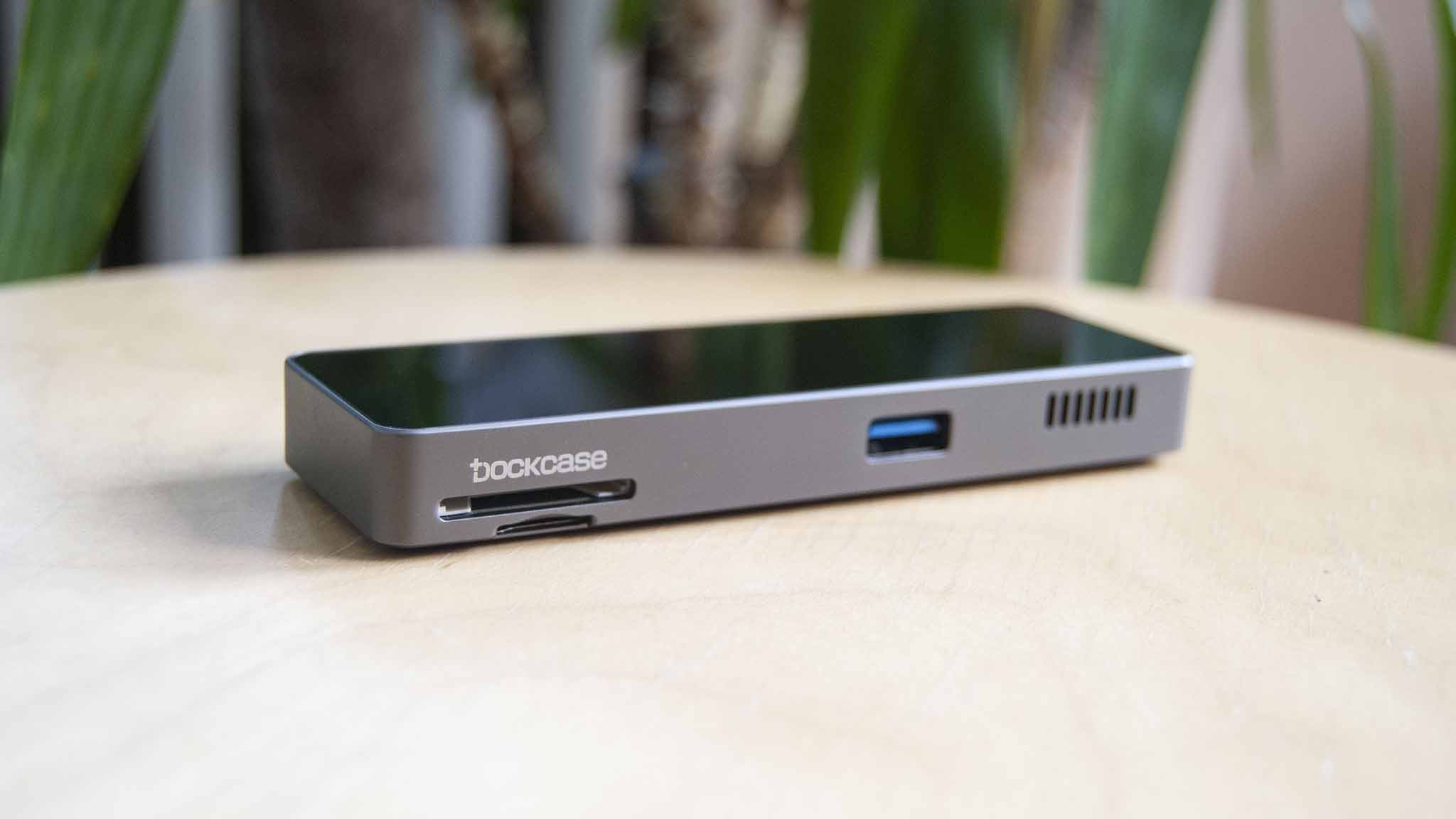
This hub worked flawlessly from the start, as you should expect from this type of device. Plug it into the host laptop, plug in your other accessories, and get on with your day. In that sense it's a win, but there are some drawbacks.
The most glaring issue is a lack of downstream USB-C. Yes, the hub has a USB-C port, but it's reserved strictly for power delivery to the host laptop. If you rely mostly on USB-C accessories, a situation many people have now eased into, you will need some extra adapters to fit the USB-A ports. Having even one proper downstream USB-C port would go a long way.
DockCase's Smart SSD enclosure includes a button on the side for swapping display readouts; this feature is lacking in the hub. It's not a dealbreaker, but being able to see more details about your connected accessories anytime you want — instead of only when you first plug in — would be appreciated.
Having a tiny display on your hub certainly isn't necessary, but I do enjoy being able to see the status of all connected accessories. Whether or not you want to spend the extra money just to have the display is up to you. There are plenty of other 7-in-1 USB-C hubs out there that cost half as much and do pretty much the same thing, though without the constant status updates.
DockCase 7-in-1 USB-C Visual Smart Hub: Competition
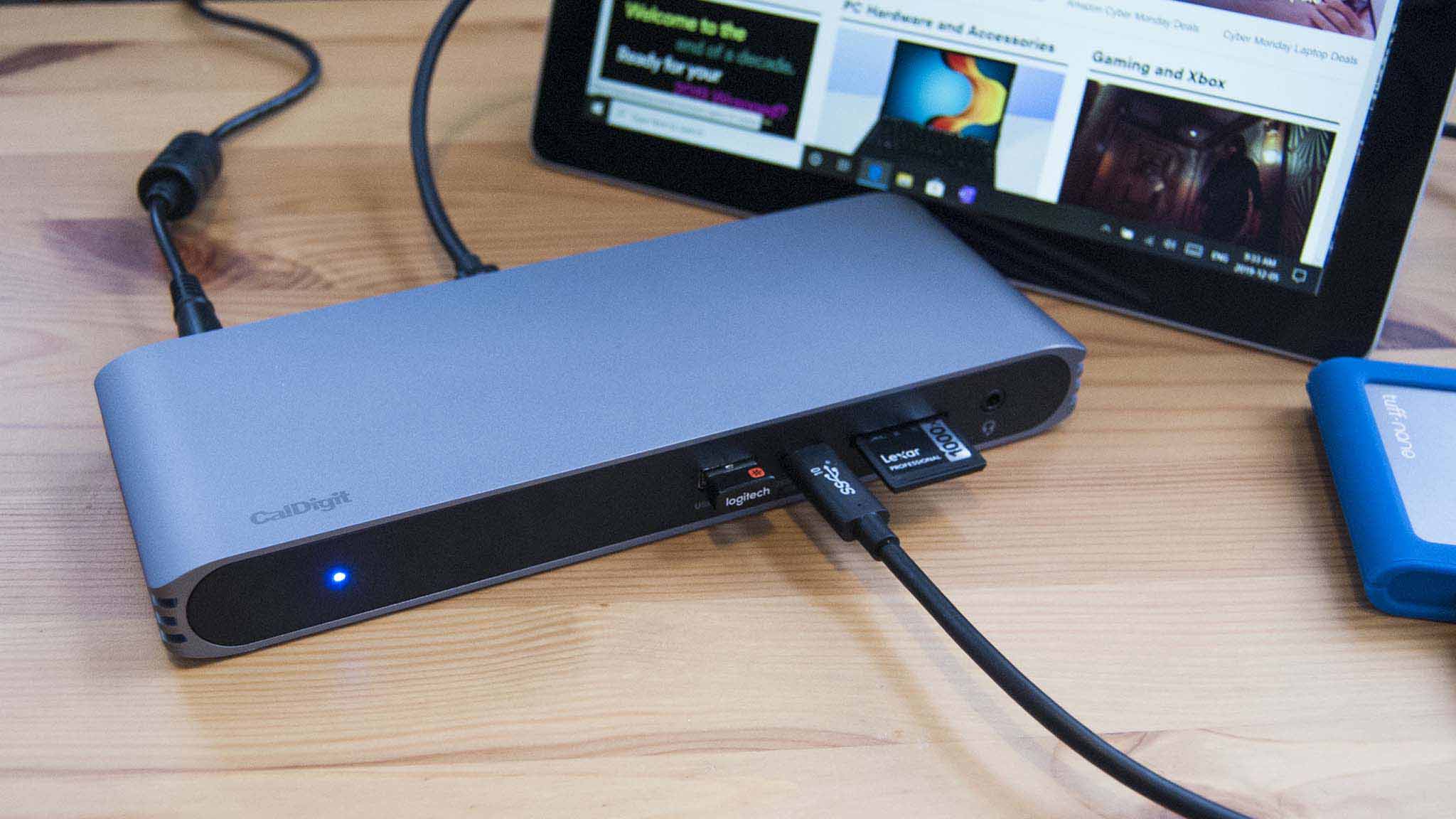
Taking a quick look at just Amazon's search page reveals a plethora of like-minded USB hubs, offering passthrough charging and generous port selection. It's evident that DockCase isn't alone in the hub market, but its built-in display does set it apart. As mentioned, whether you want to pay extra money for that display is up to you. If you don't want to pay upwards of $70, there is plenty of competition.
Anker's 341 7-in-1 USB-C hub costs about $30 and includes two USB-A 3.0, USB-C data and USB-C AC passthrough, HDMI (4K at 30Hz only), and microSD and SD card readers. Plugable has a similar option that also costs about $30. It has three USB-A 3.0, USB-C AC passthrough, HDMI (4K at 30Hz), and microSD and SD card readers. Neither of these hubs looks quite as sleek as the DockCase, but after all this is just a hub.
If you'd rather go all-out with connectivity, there are plenty of great docking stations available. Our current top pick for those with Thunderbolt 4 laptops is the CalDigit TS4, with 18 total ports (including one host connection), up to 98W of charging power to the host, dual 4K at 60Hz monitor support, and a premium build. It's expensive and it's made to stay on a desk, but it will change a hectic workflow for the better.
And if you're sticking with USB-C, CalDigit's USB-C Pro Dock is still a great choice, though it is now getting harder to find. It has nine total ports, with support for dual displays.
Should you buy the DockCase 7-in-1 USB-C Visual Smart Hub?
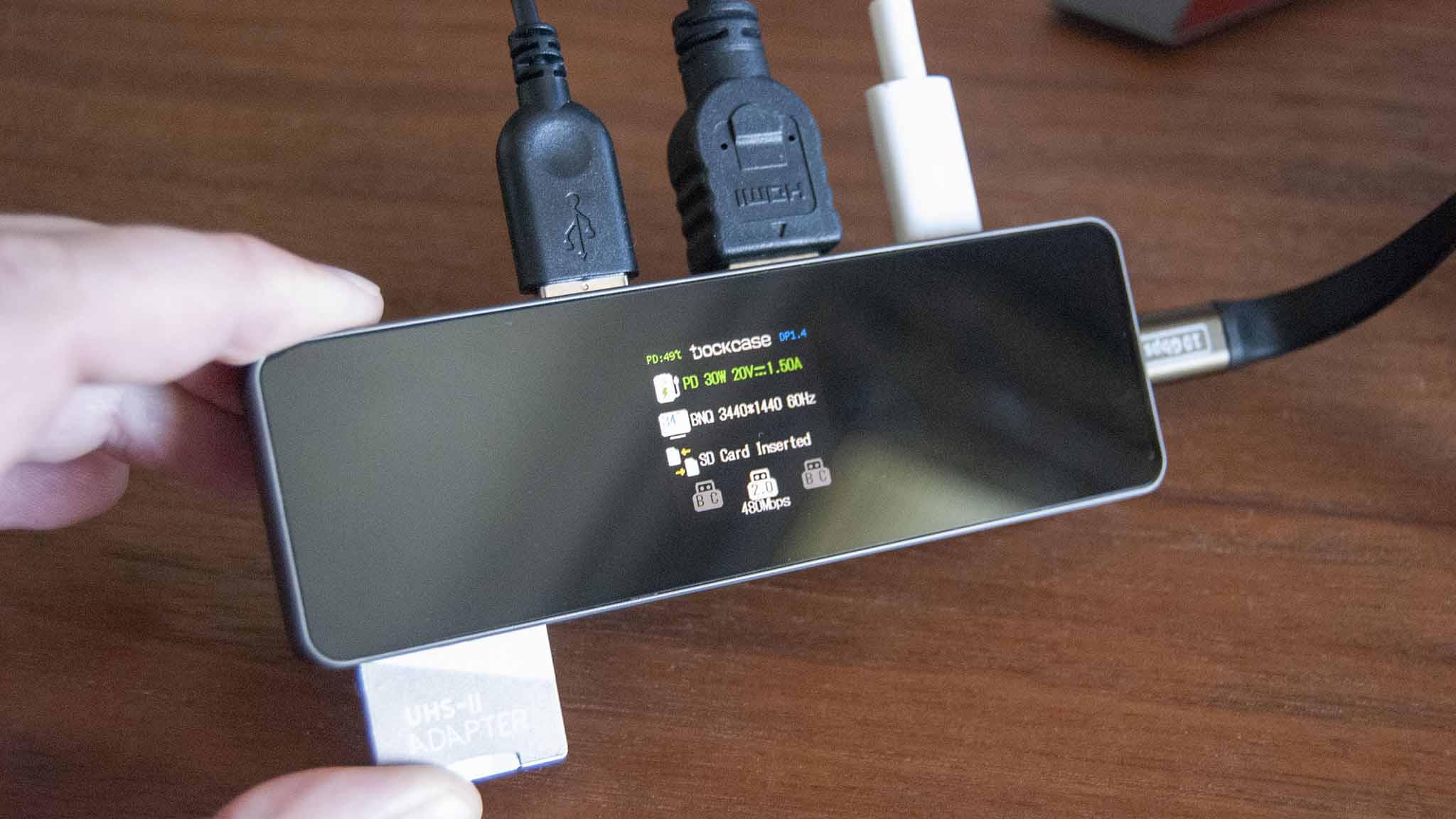
Who it's for ...
- Those with a single-monitor setup
- Those who need a compact USB hub
- Those who like keeping tabs on their connected accessories via the built-in display
Who it isn't for ...
- Those who need downstream USB-C
- Those who want to take full advantage of Thunderbolt
- Those who can live with a 7-in-1 hub without a display
The DockCase 7-in-1 USB-C Visual Smart Hub takes portable docking to the next level with its built-in display. I love being able to see the status of my connected accessories, and text is clear and legible despite the screen's 1.3-inch size. From a performance standpoint, the hub delivers as advertised, with six downstream ports, passthrough AC charging, and a detachable host USB-C cable. The hub is built to a high standard, and it's small enough that you can slip it into a pocket with ease. The 4K at 60Hz external display support is also quite nice, as many similar docks cap out at 30Hz.
And while it's all dandy from a design and performance standpoint, I imagine a lot of people will forego this hub due to the elevated cost. There are many hubs that do almost the same thing that don't have the status display, costing half or less than half of that asking price for the Visual Smart Hub. And that's without mentioning the availability of downstream USB-C, something that's lacking with DockCase's hub.
Nevertheless, if you do go for this hub, know that you're getting something that has worked flawlessly while handling multiple accessories, removable storage, external display, and passthrough charging.
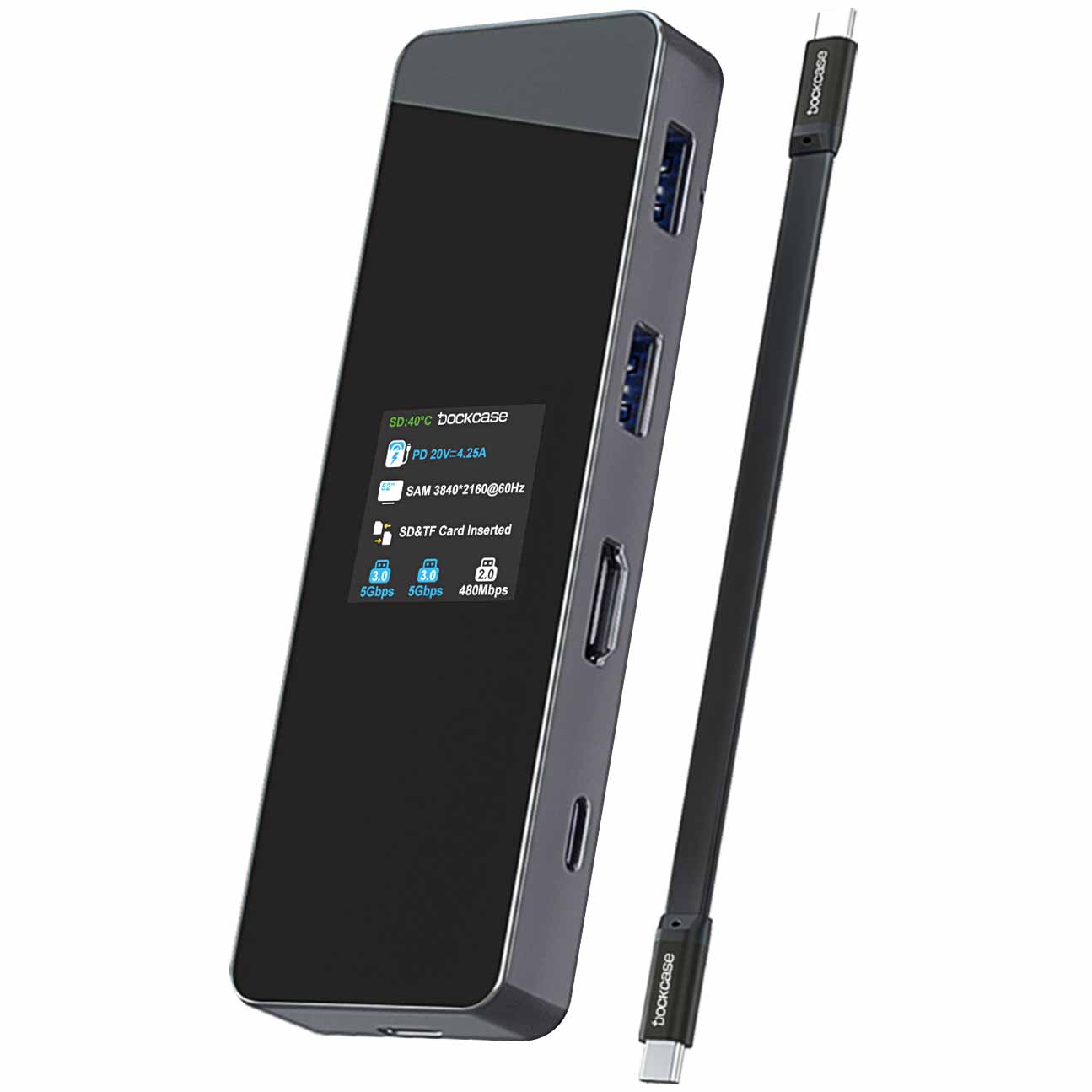
You'll pay more for this hub than for similar competing brands, but the built-in display, 4K @ 60Hz display support, and detachable host cable might sway you in its direction.

Cale Hunt brings to Windows Central more than eight years of experience writing about laptops, PCs, accessories, games, and beyond. If it runs Windows or in some way complements the hardware, there’s a good chance he knows about it, has written about it, or is already busy testing it.
